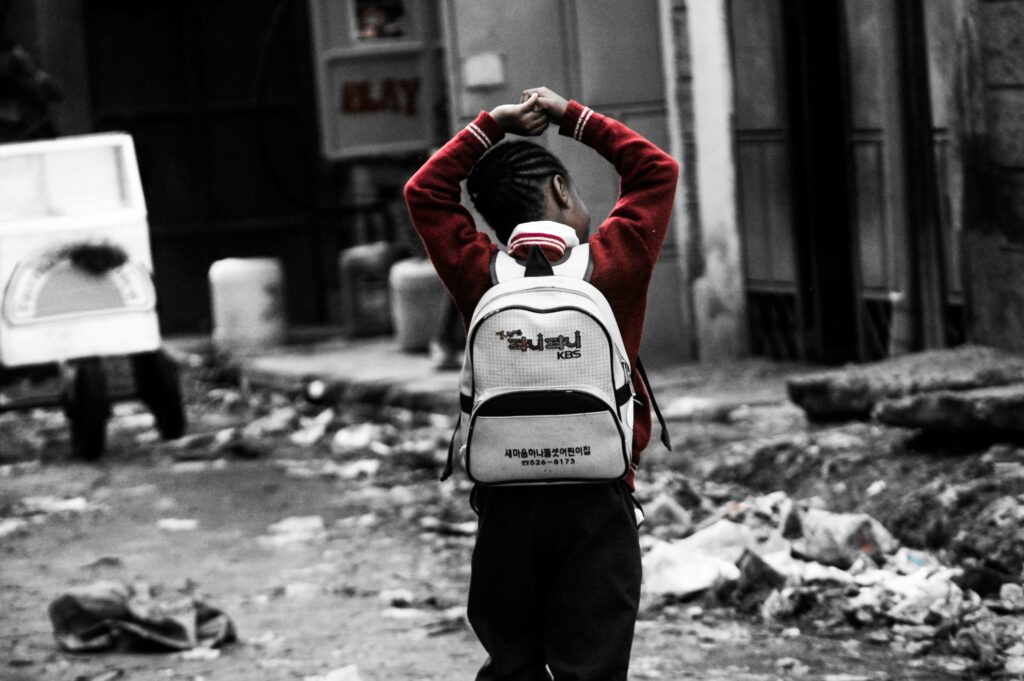Childhood is still the great invisible victim of war. Although the international humanitarian law establishes reinforced protection for minors in armed conflicts, reality shows that Thousands of children are recruited, attacked or displaced every year.
In this article we analyze how the international legal framework seeks to protect them, what are the most frequent violations and the current challenges to ensure their safety in settings such as Yemen, Afghanistan, Palestine or Myanmar.
International humanitarian law and children in armed conflict
The children in war They constitute one of the most vulnerable groups. They suffer forced displacement, loss of family members, interruption of education and serious physical and psychological damage.
He International Humanitarian Law (IHL) and the Convention on the Rights of the Child (CRC) recognize the need to provide them with a special protection, but the practical application is poor.
International legal framework for the protection of minors
The international regulatory framework is overwhelming: Minors should not participate in armed conflicts or be subjected to attacks.
- Convention on the Rights of the Child (1989) → Prohibits the recruitment of minors under 15 years of age and guarantees special protection.
- Additional Protocols to the Geneva Conventions (1977):
- Protocol I (international conflicts): prohibits participation and military recruitment of minors under 15 years of age.
- Protocol II (internal conflicts): protects the education and assistance of children in war.
- Optional Protocol (2000): raises the minimum recruitment age to 18 years.
In theory, Childhood should be protected from warIn practice, violations are constant.
Main violations against children in armed conflicts
The UN has identified six serious violations against minors in war:
- Recruitment of child soldiers → Thousands of minors are forced to fight in Syria, South Sudan, the DRC, or Myanmar.
- Murders and mutilations → Indiscriminate bombings claim child victims.
- Sexual violence against minors → Girls and adolescents suffer abuse, sexual slavery and forced marriages.
- Kidnappings → Used as hostages or for exploitation.
- Attacks on schools and hospitals → They deprive children of their right to education and health.
- Blockade of humanitarian aid → Children without access to food, medicine and shelter.
These practices openly violate international humanitarian law and perpetuate childhood suffering.
International protection and reporting mechanisms
There are different protection and accountability instruments:
- UN: Every year it publishes a report on violations against children in armed conflict.
- International Criminal Court (ICC): In 2012, he convicted Thomas Lubanga of recruiting child soldiers in the DRC.
- UNICEF and ICRC: They work on demobilization, family reunification and educational programs.
However, the lack of state cooperation and the prolongation of armed conflicts make real compliance difficult.

Current challenges in child protection in war
The main challenge is the gap between the norm and realityAlthough international humanitarian law is clear, its application depends on the will of the States and effective sanction mechanisms.
Besides, new war scenarios complicate the protection of minors:
Hybrid Wars and conflicts with multiple non-state actors.
Use of drones and artificial intelligence in attacks.
Prolongation of civil and regional wars.
The solution is to strengthen the verification mechanisms, support the victims and strengthen peace education.He cooperative learning It organizes students into teams with defined roles and shared goals. It promotes inclusion, develops social skills, and prepares students for adult life.
Conclusion
The international humanitarian law and the Convention on the Rights of the Child They provide a solid legal framework. However, as long as impunity persists and States fail to meet their commitments, Children will continue to be the most defenseless victims of war.
Ensuring your protection is a universal duty that requires more action, more resources and more accountability.
For them to work, ongoing teacher training, pedagogical leadership, and institutional support are required.
Would you like to study these and other current topics related to childhood and adolescent development? Learn about the Postgraduate in Intervention with Minors and work on what you really like!




